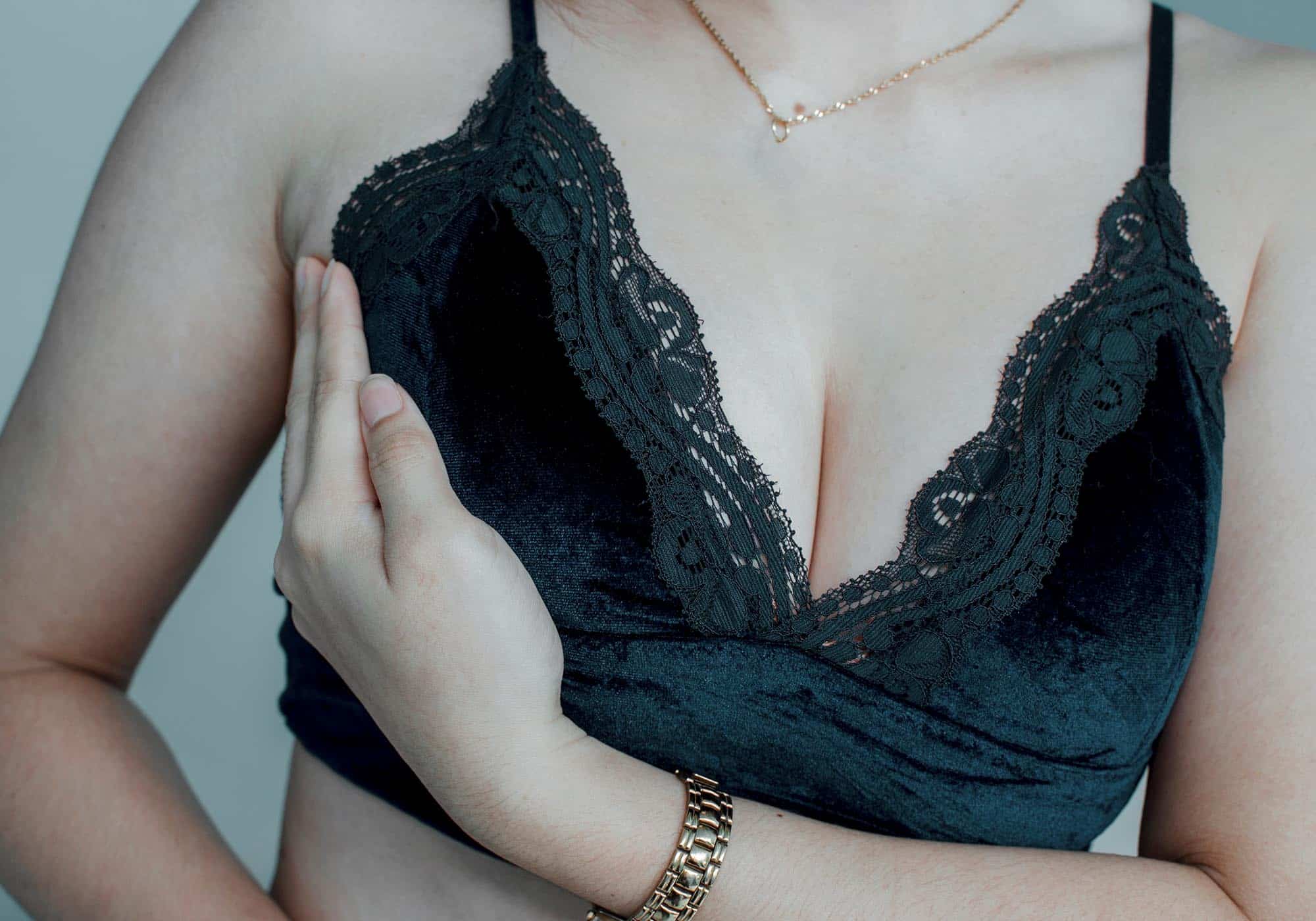In a display of pure biological brilliance, the human body instinctively weaves a scar-tissue web around objects it doesn’t recognize as its own, like breast implants and other medical devices, in order to wall off intruders and stymie perceived threats. “Typically, that scar tissue stays soft and supple and you never notice it—it’s just a barrier between the body’s tissues and the foreign body,” says Dr. Renee Burke, a board-certified plastic surgeon in Barrington, Illinois. Sometimes though, when these perfectly natural, collagen-rich casings get triggered—usually by bacteria or blood, both inflammatory agents—they “can harden, thicken, calcify, and/or distort the implant inside, which may lead to pain,” explains board-certified New York City plastic surgeon Dr. Melissa Doft. This phenomenon, known as capsular contracture, is considered to be the number one risk of breast implants.
What causes capsular contracture?
While its precise etiology isn’t crystal clear, “capsular contracture is believed to be due to a biofilm or thin layer of bacteria—generally bacteria normally found on our skin—that forms around the implant at the time of surgery,” says Dr. Umbareen Mahmood, a board-certified plastic surgeon in New York City. “The body reacts to the bacteria [by] increasing the amount of scar tissue formation.” Less common contributors include hematoma and seroma—collections of blood or fluid that pool during or after surgery—as well as “implant rupture or a possible genetic predisposition to forming aggressive scar tissue,” Dr. Mahmood tells us.
It’s worth noting, however, that “contracture does not necessarily have to be problematic,” adds Dr. Carolyn C. Chang, a board-certified plastic surgeon in San Francisco. There are four distinct grades of irregularity—and “often only those more advanced degrees of contracture warrant treatment.”
Who is most prone to capsular contracture?
Historically, plastic surgeons have seen a higher rate of contracture with silicone implants versus saline and smooth implants versus textured, according to Dr. Chang.
Beyond implant type, there’s also a relationship between incision location and capsular contracture, with certain entry points having been proven safer than others. “Implants inserted via an inframammary fold incision [in the breast crease] have been demonstrated to have lower rates of capsular contracture, due to less bacteria seeding of the implant, compared to areolar or axillary incisions,” explains Dr. Mahmood. In other words, the skin of the breast fold typically carries less native bacteria than that of the armpit (unsurprisingly) and the nipple-areolar complex, which actually secretes a fair amount of natural bacteria, courtesy of milk glands.
The position of an implant can influence its risk profile too, with those sitting above the pectoralis muscle (in what’s known as the prepectoral or subglandular position) being more at risk for contracture than implants that are tucked underneath the muscle. Indeed, “studies show that placing the implant behind the muscle, rather than on top, can prevent capsular contracture,” adds Dr. Burke. Reason being, “every time you flex your pectoralis major muscle, you’re massaging that implant, and by moving it around in the pocket, you’re keeping the capsule nice and open.”
While some surgeons recommend routinely massaging augmented breasts, to keep capsules soft, “if the implant is behind the muscle, you’re actually getting the equivalent of a daily massage every time you get out of bed or open the refrigerator—or do any little thing that [requires] you [to] use your pectoralis major muscle,” Dr. Burke explains.
Also at heightened risk of capsular contracture are patients who smoke, adds Dr. Chang, plus anyone with aging implants as well as postmastectomy breast reconstruction patients, those who’ve had radiation to the breasts, and folks with a history of capsular contracture. “I always tell patients that once you have it, there’s always a chance it can recur,” says Dr. Burke—“especially if you are a very fast capsule-former.”
How do surgeons minimize the risk of capsular contracture?
By committing to techniques devised to diminish bacterial contamination and bleeding during breast augmentation, plastic surgeons have dramatically shrunken the incidence of capsular contracture. Among the now nonnegotiable aseptic standards of breast surgery: using nipple shields to prevent bacteria contamination; performing a gentle and bloodless dissection; prepping the breast pocket with an antibiotic/antiseptic solution; changing surgical gloves after placing each implant; avoiding a drainage tube; and using the Keller funnel, “whereby the implant is transferred from the sterile box, to the sterile funnel sleeve, directly into the patient, with no other handling,” says Dr. Mahmood.
In a 2016 retrospective review, published in the Aesthetic Surgery Journal, surgeons saw a 54% reduction in the rate of reoperation due to capsular contracture in primary breast aug patients whose implants were placed with a Keller funnel.
Dr. Doft also points out that “more physicians are now placing the implant beneath the pectoralis muscle and [that] the silicone implants are all cohesive gel implants, meaning that the gel is crosslinked so that it does not leak” and inflame the capsule—two critical factors that have helped to tamp down breast implant complication rates over the past decade.
While capsular contracture remains among the most common breast implant risks, our surgeons agree that the odds of developing it have dropped considerably, particularly for first-time implant patients. Attaching a reliable percentage here is tricky, since the numbers published in the scientific literature frequently “do not distinguish between implant type, pocket placement, or incision location,” Dr. Mahmood says, and “the data reflects studies performed several years ago,” before today’s gold-standard techniques were widely adopted by the industry.
What are the symptoms of capsular contracture?
“Most cases of capsular contracture occur within the first two years after augmentation,” says Dr. Mahmood. Early on, patients may notice a tightness in their breasts, but there’s not yet a detectable change in their appearance. As the scar tissue thickens, it can squeeze and displace the implant, pushing it upward and distorting the shape of the affected breast. Breasts suffering from full-blown contracture feel hard and look malformed, lopsided, or asymmetrical. “Ultimately, when it’s gotten pretty far advanced, it can become quite painful,” says Dr. Burke.
Is there a way to halt and reverse capsular contracture?
In the earliest stages, yes, there are nonsurgical remedies for capsular contracture, including implant massage and various medications.
Since bacteria is often to blame for the condition, you might assume antibiotics play a role. But as Dr. Burke explains, “the capsule is very avascular—it does not have a good blood supply—so antibiotics and things that have to travel through the bloodstream can’t easily access the capsule.” Instead, surgeons tend to rely on asthma drugs like Singulair—leukotriene inhibitors that target the inflammatory process involved in capsular contracture. “These medications can work to loosen the scar tissue contracture in breast implant patients,” says Dr. Chang. (Preventing and treating capsular contracture is an off-label use for these drugs, she adds.)
“There has been some discussion about the use of ultrasound to help break up contracture, though its efficacy is disputed,” Dr. Chang notes.
What is the treatment for capsular contracture?
Given massage and meds in a timely manner, says Dr. Mahmood, “some patients may not progress to more severe capsular contracture.” Once capsules harden and the contracture becomes visible, however, “there’s really nothing you can do but take the patient back to the operating room,” Dr. Burke says. Surgeons remove the implants and surrounding capsules before placing fresh implants, sometimes along with an acellular dermal matrix—a supportive surgical mesh, which has been found to help decrease the recurrence of capsular contracture.
On the upside, adds Dr. Mahmood, “the major breast implant companies understand that capsular contracture can occur, so they all offer free implants, for primary augmentation, for a set period of time—Allergan is 10 years, Sientra is 20 years—as well as a certain amount of money to cover surgical costs within the first two years.”











